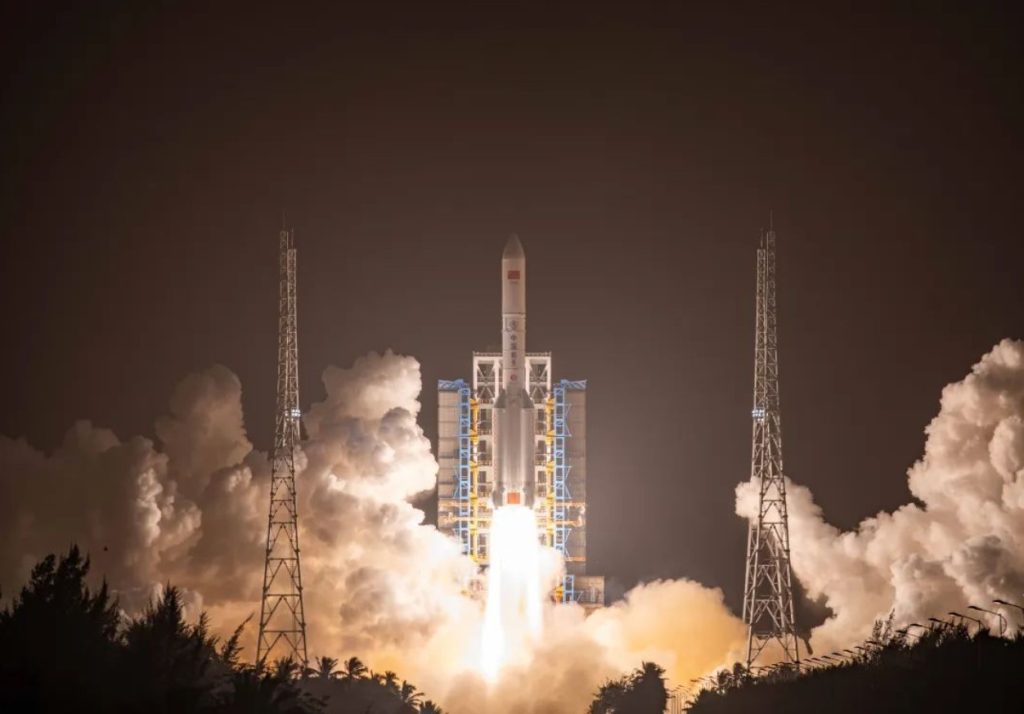HELSINKI — China has created a new unit of the People’s Liberation Army, and this reorganization is expected to affect how its space forces are led.
Xi Jinping, China’s president and chairman of the Central Military Commission, launched the Information Support Force (ISF) for the People’s Liberation Army (PLA) on April 19. The ISF is effectively taking the place of the Strategic Support Force (SSF), which was in charge of the PLA’s space forces.
Xi emphasized that the information support force is a new, strategic branch of the military and a key part in coordinating the construction and application of the network information system, Chinese state media reported.
The official PLA announcement stated there are now four services: the Army, Navy, Air Force and the Rocket Force. Additionally, there are four arms, including the Aerospace Force, the Cyberspace Force, the Information Support Force and the Joint Logistics Support Force. The ASF was previously known as the Aerospace Department of the Strategic Support Force.
This means, following a strict protocol order, that the Aerospace Force (ASF), which directs the PLA’s space forces, is now the senior force, according to a comment on the development by Brendan Mulvaney, director of the China Aerospace Studies Institute (CASI), a Department of the Air Force think tank.
Mulvaney notes that the Chinese view the “Information Domain” as a domain of war in itself. This makes it equal to the physical domains of air, land, sea, and space.
This reorganization is the most significant one in the PLA since 2015, when the SSF was established. That Force was set up to bring together space, cyber, electronic, and psychological warfare capabilities under one umbrella.
The removal of the SFF and the introduction of the new ISF suggest a reorganization aimed at enhancing operational efficiency and integration. By centralizing information operations, including space, the PLA could aim to improve coordination and control over these domains.
The move may also be, at least in part, a response to widely reported corruption issues with the PLA. In a related move, two senior officials at the top of China’s main space contractor were removed in recent months.
Impact on PLA space forces?
It is not clear how the ISF will function and what forces and capabilities it will direct. Likewise, its effect on the PLA’s space forces cannot be determined from the outside.
The move seems to indicate a strategic shift towards giving priority to information warfare, which encompasses cyber operations, electronic warfare, and possibly space aspects such as satellite communication and reconnaissance.
Additionally, the development could affect command and control mechanisms over its space assets. This could influence satellite operations, space surveillance, and other space-related military activities.
China has acknowledged and responded to the developments related to the Russian invasion of Ukraine in February 2022, including the use of Starlink by Ukrainian forces and the role of remote sensing data.
The country has significantly expanded its satellite operations in recent years. capabilities for gathering information about an enemy's activities, creating worry or unease among the U.S. Space Force. China intends to create two different groups of satellites that travel in space close to the Earth's surface for transmitting and receiving a large amount of data large groups of communication satellites in space and has plans to build a space and ground information network, called SGIIN.
The latter wants to make a combined system that includes communication, remote sensing, navigation, weather, and other abilities that work in space. The PLA also takes a deliberate or careful approach an important and planned way of doing things to activities such as transferring fuel while in orbit.
The reorganization may also affect China’s ability to defend its own space possessions and how it may develop abilities that could threaten enemies’ space-based systems. The geostationary orbit is a specific area where games involving strategy, and competition between space powers like the U.S., China, and Russia are happening.challenges and deception between powerful countries in spaceThe move may also change how the PLA plans its space activities with its Army, Air Force, Navy, and Rocket Force.
China has formed a new group within the People’s Liberation Army, and the reorganization will have effects on how its space forces are controlled.









